by Lisa Cooke | May 10, 2017 | 01 What's New, Adoption, Canadian, Census, DNA, Genealogy Gems Podcast
The Genealogy Gems Podcast
with Lisa Louise Cooke
Episode #203
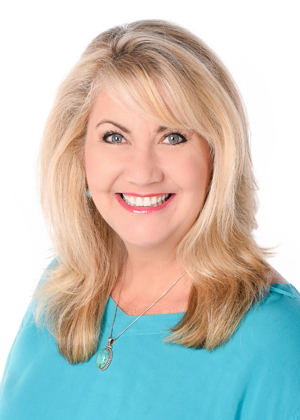
This episode features a special interview with renowned Canadian expert Dave Obee. He shares his favorite tips on researching the Canadian census?his insights are fascinating whether you have Canadian ancestors or not!
Also in this episode: an inspiring adoption discovery, DNA testing news at 23andMe, a tip for incorporating family history into a wedding, and a brand-new resource that can finally help you solve one of genealogy’s most perplexing questions.
NEWS: ATLAS OF HISTORICAL COUNTY BOUNDARIES UPDATE
Atlas of Historical County Boundaries
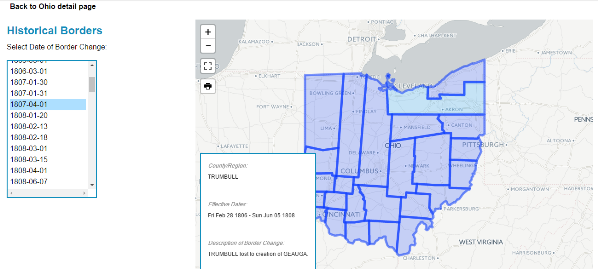
Google Earth for Genealogy (and more on Google Earth Pro)
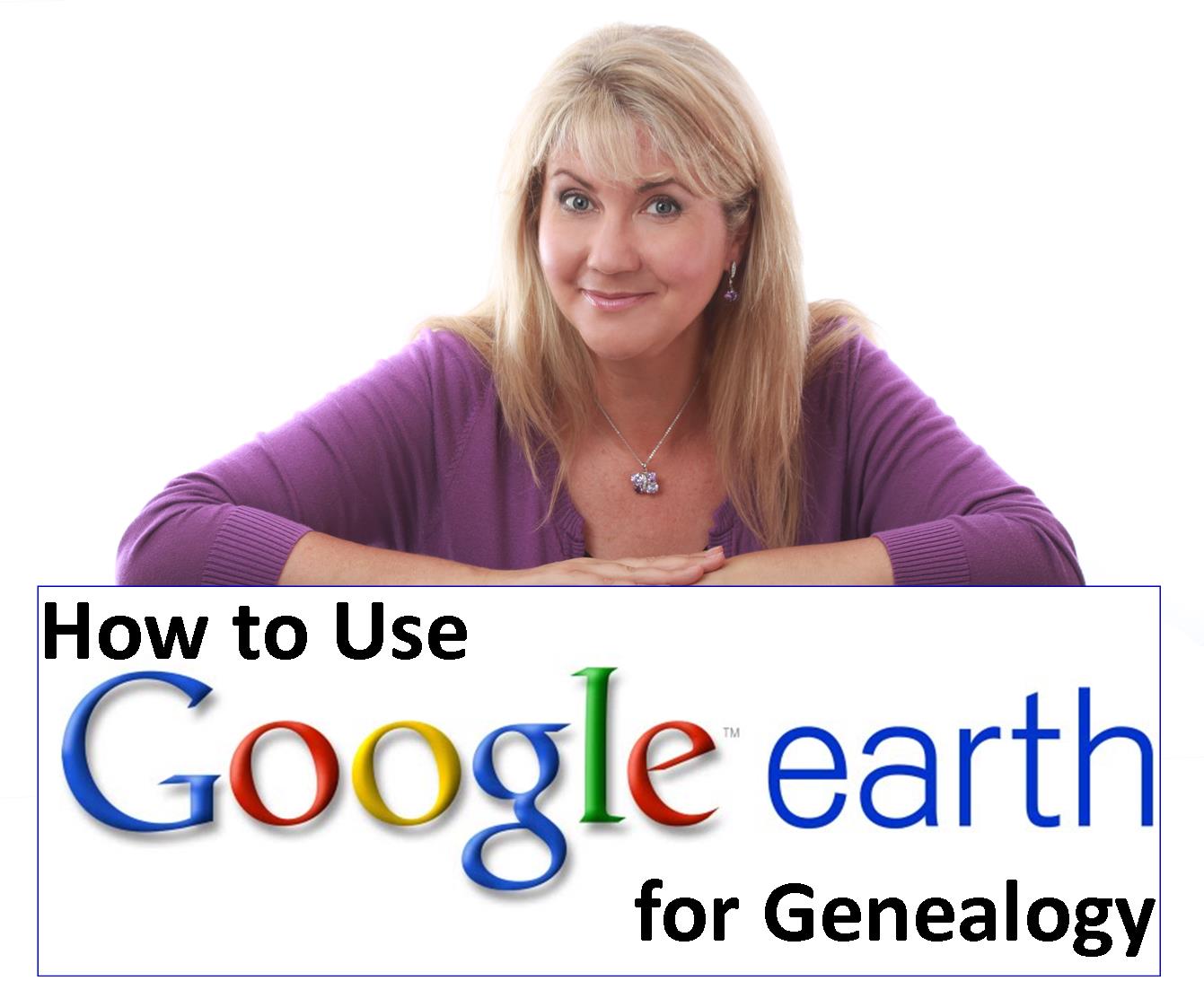
LINK: https://test.lisalouisecooke.com/free-google-earth-for-genealogy-video-class-by-lisa-louise-cooke/
NEWS: 23andME DNA TEST UPDATES
Click here for the full news and Diahan’s comments
MORE recent DNA news:
Family Tree DNA enhancements:Click here for the full story, with comments and step-by-step instructions on updated myOrigins tool
Get help with DNA testing at both these sites with these quick reference guides by Diahan Southard:
Understanding 23andMe
Understanding Family Tree DNA
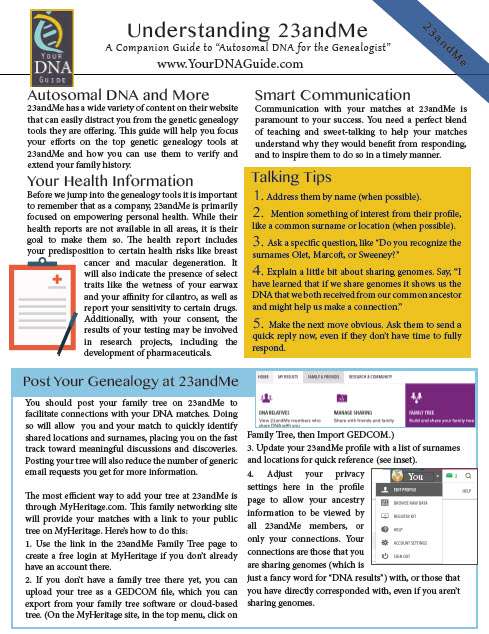
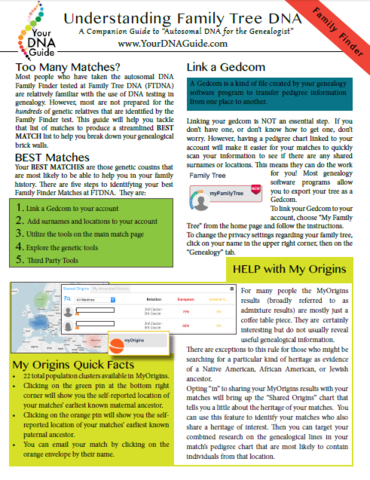
NEW! GENEALOGY GIANTS GUIDE
by Genealogy Gems Editor Sunny Morton
Click here to watch the presentation that inspired this guide: a popular RootsTech 2017 lecture comparing the four major genealogy records websites: Ancestry.com, FamilySearch.org, Findmypast.com and MyHeritage.com.
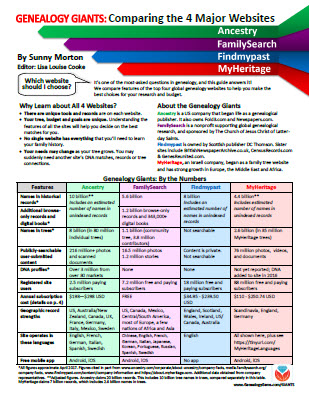
LINK: https://www.shopgenealogygems.com/collections/genealogy-guides/products/genealogy-giants-quick-guide
Available in print or digital format
This comprehensive quick reference guide explains:
How knowing about all four websites can improve your family history research
How the sites stack up when it comes to the numbers of historical records, names in trees, DNA profiles, site users, site languages and subscription costs
Unique strengths of each website and cautions for using each
What to keep in mind as you evaluate record content between sites
Geographic record strengths: A unique table has an at-a-glance comparison for 30+ countries
How to see what kinds of records are on each site without subscribing
How family trees are structured differently at these websites?and why it matters
Privacy, collaboration and security options at each site
How DNA testing features differ at the two websites that offer it
What you can do with free guest accounts at each website
Subscription and free access options
MAILBOX: LIZ ON FINDING CHUCK’S BIRTH FAMILY
Click here to learn more about Diahan Southard’s genetic genealogy video tutorials?and a special discount price for Genealogy Gems fans.
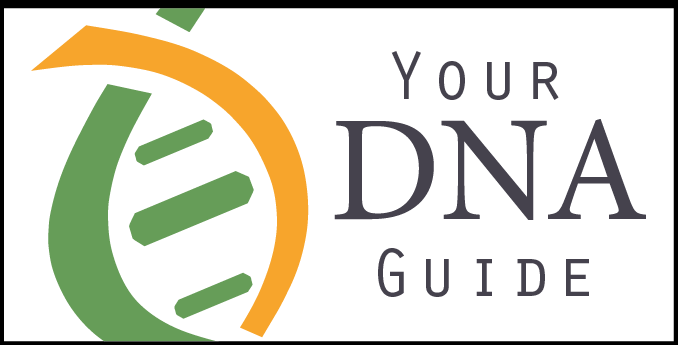
LINK TO: https://www.yourdnaguide.com/genealogy-gems-dna-tutorial
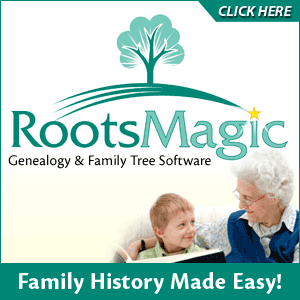
Lisa Louise Cooke uses and recommends RootsMagic family history software. From within RootsMagic, you can search historical records on FamilySearch.org, Findmypast.com and MyHeritage.com. In the works: soon RootsMagic will be fully integrated with Ancestry.com, too: you’ll be able to sync your RootsMagic trees with your Ancestry.com trees and search records on the site.
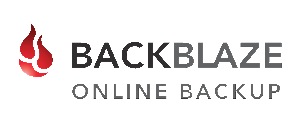
Keep your family history research, photos, tree software files, videos and all other computer files safely backed up with Backblaze, the official cloud-based computer backup system for Lisa Louise Cooke’s Genealogy Gems. Learn more at http://www.backblaze.com/Lisa
MAILBOX: THANKS FOR 1940 CENSUS TIPS

Kate Eakman shares tips for understanding the 1940: click here to read them or click here to listen to them on Genealogy Gems Podcast episode 201
MAILBOX: WEDDING TIP
Before a wedding: start an online family tree and invite each family member to add what they know!
Share family history this summer: Reunions, weddings, BBQs, etc
Genealogy Gems Pinterest Page: Incorporating Family History Ideas into Your Wedding
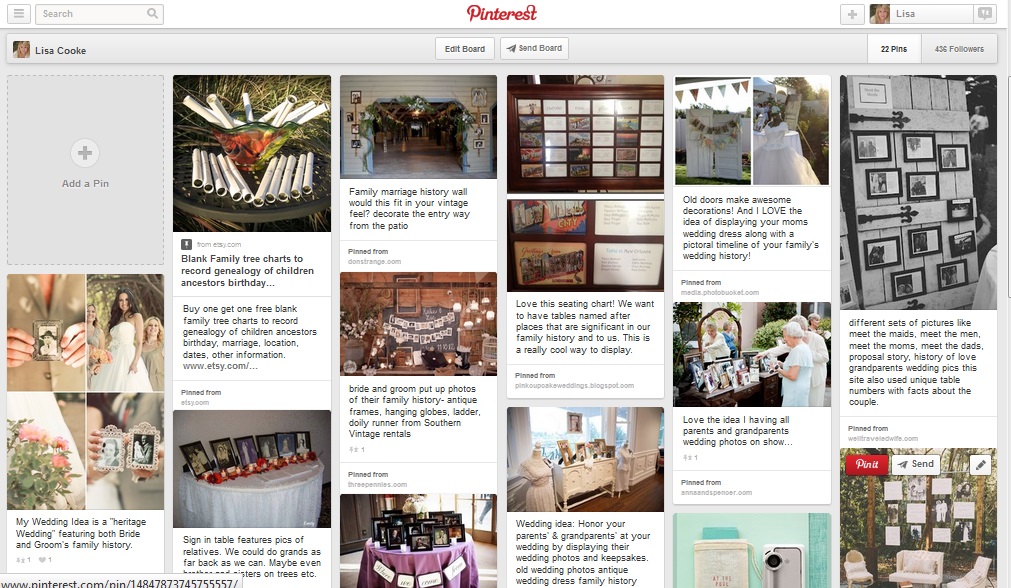
Go to: https://www.pinterest.com/lisalouisecooke/incorporating-family-history-into-your-wedding/
Our sponsor for this episode: StoryWorth
Give Mom the gift of StoryWorth this Mother’s Day
Visit www.StoryWorth.com/Lisa to get $20 off
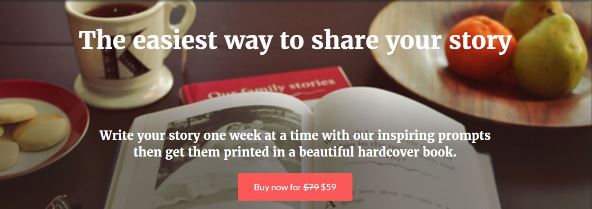
Visit: www.StoryWorth.com/Lisa
INTERVIEW: DAVE OBEE
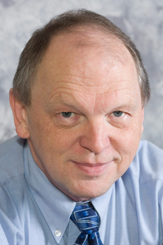
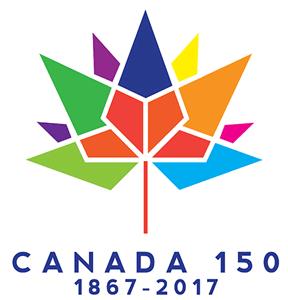
Continuing our celebration of Canada’s 150th birthday!
Dave Obee is an internationally-renowned Canadian journalist, historian and genealogist. Dave is a columnist for Internet Genealogy and Your Genealogy Today (formerly Family Chronicle). Dave has also written about family history for Canada’s History and Your Family Tree in the United Kingdom.
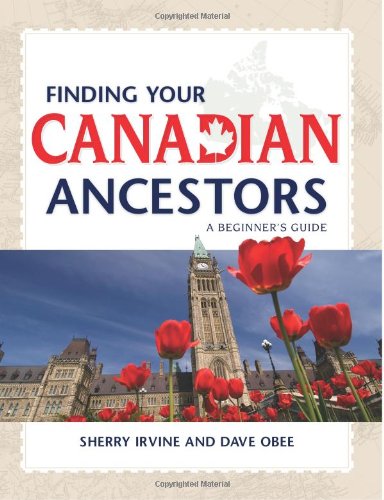
Put Dave’s books on your shelf:
Finding Your Canadian Ancestors: A Beginner’s Guide
Counting Canada: A Genealogical Guide to the Canadian Census
Destination Canada: A Genealogical Guide to Immigration Records
Making the News: A Times Columnist Look at 150 Years of History
Canadian census tips from Dave Obee:
The 1901 census is his favorite because it says for the first time where people had come from
He starts his searches on Ancestry.ca but census databases are free to search on Library and Archives Canada website
Marital status may not have been totally accurate. They only captured single or married or windowed. Divorced was not captured.
There are two different types of enumerations: de facto and de jure, and the rules were different.
This means your ancestor could be enumerated in multiple locations
Lisa Louise Cooke Googled the Canadian Census Enumerator Instructions for 1901:
At Library & Archives Canada
Original instructions digitized at Archive.org
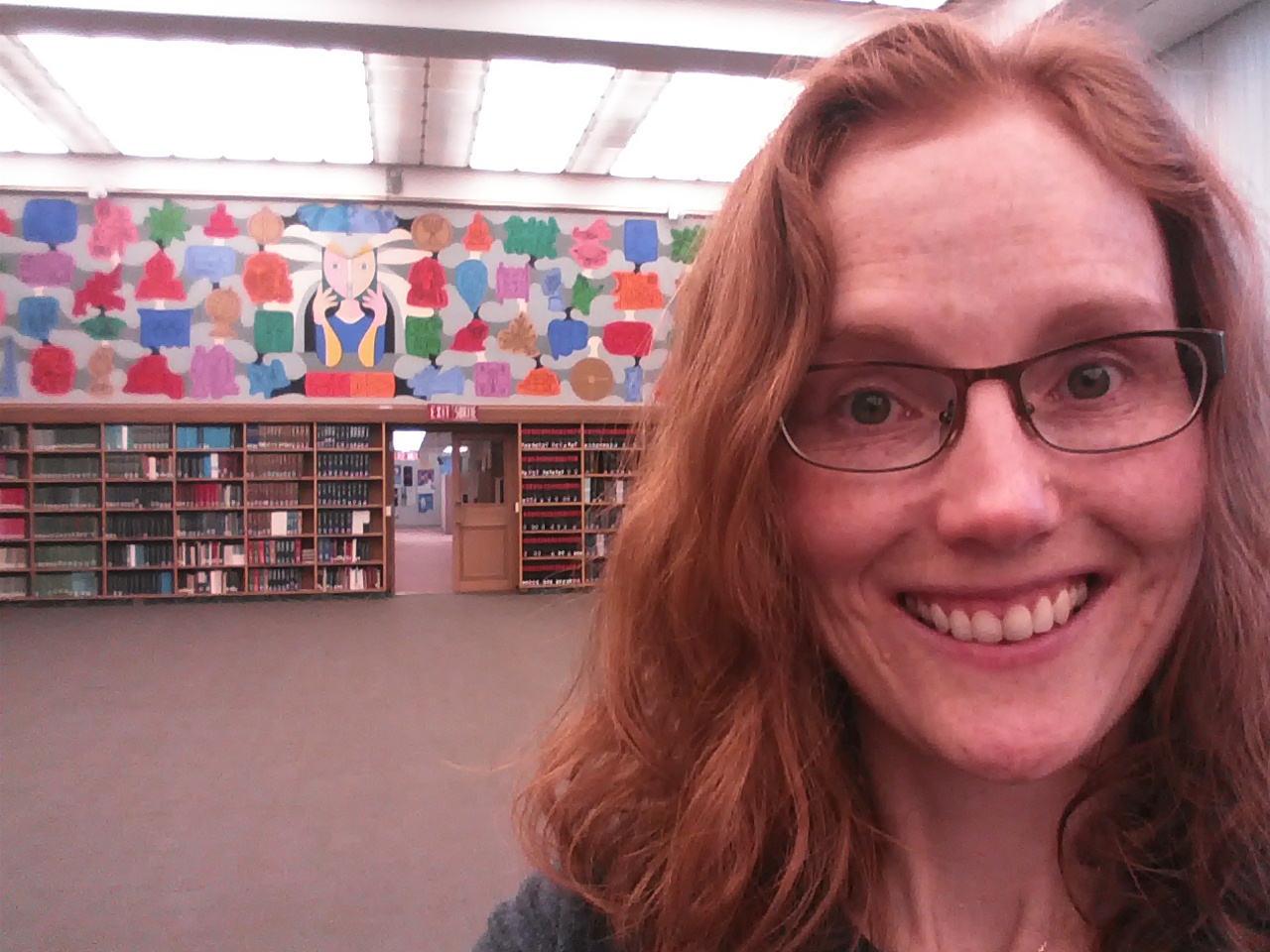
More on Canada genealogy research:
Claire Banton in Genealogy Gems Podcast episode #199
Blog post on Canadian Censuses 1825-1921
Search Canadian Passenger Lists for Free at Library and Archives Canada
Canadiana: Canadian Digital Archive and Portal to the Past
Google Earth for Canada and Genealogy
Our Sponsors:
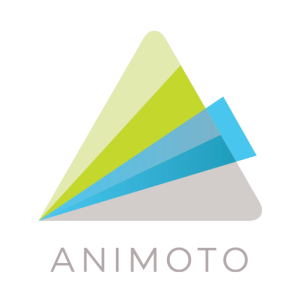
Start creating fabulous, irresistible videos about your family history with Animoto.com. You don’t need special video-editing skills: just drag and drop your photos and videos, pick a layout and music, add a little text and voila! You’ve got an awesome video! Try this out for yourself at Animoto.com.
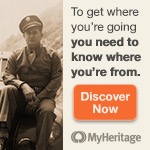
MyHeritage.com is the place to make connections with relatives overseas, particularly with those who may still live in your ancestral homeland. Click here to see what MyHeritage can do for you: it’s free to get started.
BONUS CONTENT for Genealogy Gems App Users
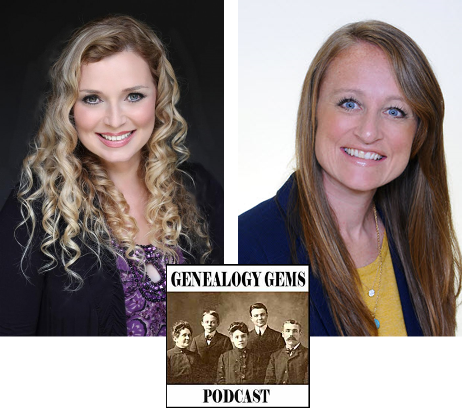
If you’re listening through the Genealogy Gems app, your bonus content for this episode is EXTRA special! It’s an exclusive conversation between Your DNA Guide and Cece Moore of DNA Detectives on researching adoption or unknown parentage. Don’t miss it! The Genealogy Gems app is FREE in Google Play and is only $2.99 for Windows, iPhone and iPad users.
GENEALOGY GEMS BOOK CLUB
Our featured genealogy book club author this month is Miss Fannie Flagg!
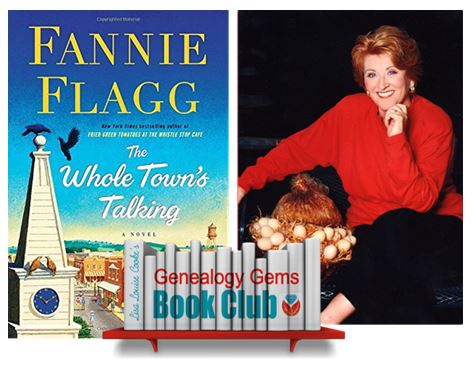
The Whole Town’s Talking by Fannie Flagg
Read more tips on discovering the historical context of your ancestor’s lives:
Tell Your Ancestor’s Story: Use Social History for Genealogy
Social History for Genealogy and the Colored Farmer’s Alliance
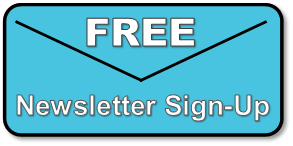
PRODUCTION CREDITS
Lisa Louise Cooke, Host and Producer
Sunny Morton, Editor
Diahan Southard, Your DNA Guide, Content Contributor
Lacey Cooke, Service Manager
Vienna Thomas, Associate Producer
Check out this new episode!
by Lisa Cooke | Aug 31, 2011 | Census, Research Skills
Genealogy records are about to expand online. It’s still about 9 months away, but in the time it takes to bring a new descendant into the world the National Archives will be delivering the 1940 US Population Schedules to the public. There are a couple of guys who have been on the forefront of this event: none other than Steve Morse and Joel Weintraub. (You’ll remember hearing from Joel from his past appearance on the Genealogy Gems Premium Podcast.)
Of course family historians are chomping at the bit to dig into the 1940 census even though there won’t be an index when it’s first released. However, the guys have put out a press release about what you can do now to get ready to search:
“It will not be name indexed, so it will be necessary to do an address search in order to find families. Address searching involves knowing the ED (enumeration district) in which the address is located.. The National Archives (NARA) earlier this year indicated they had plans to make available in 2011 the 1940 ED maps of cities and counties, and ED descriptions, but their recent move to consider having a 3rd party host all the images may have appreciably set back this timetable.
The only website that currently has location tools for the 1940 census is the Steve Morse One Step site. There are several such tools there, and it could be overwhelming to figure out which tool to use when. There is a tutorial that attempts to clarify it and an extensive FAQ.
We are announcing the opening of another educational utility to help people learn about the different 1940 locational search tools on the One Step site, and information about the 1940 census itself. It is in the form of a quiz, and should help many, many genealogists quickly learn how to search an unindexed census by location. The new utility is called “How to Access the 1940 Census in One Step“. Not only is it informative, we hope it is entertaining.”
Entertaining it is – at least to those of us passionate about family history! Now you can get started preparing to get the most out of the 1940 population schedules right away.
There’s another way to prep for the big release. Learn more about the 1940 enumeration process by watching the National Archives YouTube channel’s four short videos created by the US Census Bureau prior to 1940. These films were used to train enumerators on their general duties and responsibilities, as well as the correct procedures for filling out the 1940 census.
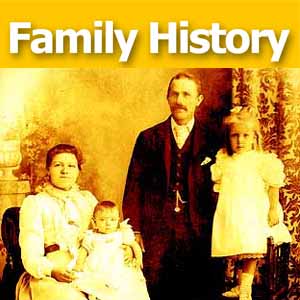
Though family historian tend to focus on the population schedule, there were several different schedules created and the films describe the main ones including the population, agriculture, and housing schedules. (Learn more about the various census schedules by listening to Family History: Genealogy Made Easy Episode 10 featuring Curt Witcher.)
You’ll also learn more about the background of the census and the reasons behind the questions that were asked. And it’s the reasons behind the questions that shed even more light on what the priorities were back at that time and clues as to what life was like.
The films also cover the duties of the enumerators, highlighting the three major principles they were instructed to follow: accuracy, complete coverage, and confidential answers.
You can watch the first film, The 1940 Census Introduction here and then check out the 1940 census playlist at the national Archives channel at Youtube.
by Lisa Cooke | Oct 24, 2013
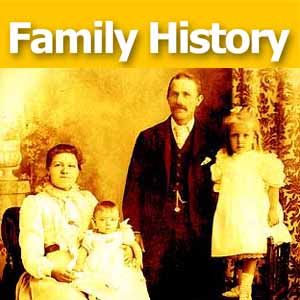 New to podcasts? Read Frequently Asked Questions (about the podcasts, how to listen and how to subscribe for free.) Welcome to the Family History: Genealogy Made Easy Podcast, a step-by-step series for beginning genealogists—and more experienced ones who want to brush up or learn something new. I first ran this series in 2008. So many people have asked about it, I’m bringing it back in weekly segments.
New to podcasts? Read Frequently Asked Questions (about the podcasts, how to listen and how to subscribe for free.) Welcome to the Family History: Genealogy Made Easy Podcast, a step-by-step series for beginning genealogists—and more experienced ones who want to brush up or learn something new. I first ran this series in 2008. So many people have asked about it, I’m bringing it back in weekly segments.
Subscribe for free in iTunes
Episode 1: GettingStarted. Special Guest: Margery Bell, Assistant Director of the Oakland, California Family History Center. Her own family history journey started in her 20s with a visit to a relative’s house. She didn’t even know what to talk about! But it was a start. Years later, she visited the Northern Ireland home of her great-grandmother, and felt like she’d come home. Learn her tips for getting started and two inspiring stories of “genealogy serendipity.” Then you’ll learn why choosing a database for your family tree is your first essential step. Hear about some of my favorite databases—both free resources and products you can pay for. Don’t spend too much time fussing about software: I’ll tell you why you should just pick something and go with it.
Episode 2: Interviewing Skills. Special Guest: Cath Madden Trindle, a well-known family history instructor and certified genealogist. Cath talks about discovering dysfunction in her family (don’t we all have that?) and the new appreciation she gained for her family as a result. She also gives us some great tips on how to share what we find. Then we’ll talk about interviewing your relatives. That’s an important skill for any genealogist—beginner or more advanced—because you’ll need to interview people over and over again. Hear about you who you should interview, what to ask and how to ask it! You’ll also learn two important traps to avoid that will save you a lot of time and keep you from losing everything you learn.
Episode 3: Working Backwards, and Social Security Death Index. Special Guest: Miriam Robbins, a well-known genealogy blogger and teacher. She shares her best research tips, what motivates her to delve into her family history and how that discovery has enriched her life. In our second segment we answer the question “Why do we work backwards in genealogy?” and then fire up the Internet and go after your first genealogical record. We’re going to dig into the U.S. Social Security Death Index.
Episode 4: Conference and Vital Records. Special guest is the longtime online news anchorman of genealogy, Dick Eastman, the author of Eastman’s Online Genealogy Newsletter. He talks about the changing industry and the benefits of attending genealogy conferences. Next, you’ll learn the ins and outs of using some “vital” sources for U.S. birth and death information: delayed birth records, the Social Security Death Index (SSDI) and Social Security applications (SS-5s) and death certificates.
Episode 5: Unlocking the Past and Home Sources. Special guest is genealogy author and publisher David Fryxell. I’m going to be talking to him about locating valuable family resources and the importance of being tenacious in your research. Then in our second segment we’re going to help you along on your own genealogy journey by talking about the importance of scouring your home for family clues and creative and effective ways to get the words out to your relatives so that family history information finds you!
Episode 6: Sleuthing Techniques and Genealogical Records. A genealogy writer and educator talks to us about sleuthing Sherlock Holmes-style for our families. He says, “Stop looking for names and start looking for families!” Then I’ll give you an overview of the different kinds of historical records in which our ancestors may appear. Whenever a life event happened that involved the government or a church, paperwork was generated: vital records, land sales, wills and probates, baptisms and burials. There is often a ripple effect in which the event was reported in other sources, like newspapers. In future episodes, we’ll talk in depth about finding and using these different kinds of sources. But consider this episode your orientation to them!
Episode 7: Best Genealogy Websites Part 1. Special guest: Lisa Alzo, popular genealogy lecturer and writer (now the author of nine books and online genealogy instructor at Family Tree University and the National Institute for Genealogical Studies. We talk about her reasons for researching her family history and what she’s learned in her genealogical journeys (which include international travel in Eastern Europe). Then we tackle an essential topic: the best subscription websites for genealogical data. This is a two-part topic: in this episode I talk about sites that require payment to access their core content. In Episode 8, we’ll talk about the fantastic free websites that are out there.
Episode 8: Best Genealogy Websites Part 2. In a follow up to last week’s episode about subscription genealogy records website, in my first segment our guest is Yvette Arts, Director of Content Partnerships at World Vital Records. She tells us about exciting developments at the website that have helped make it a success. In our second segment we look at five organizations that provide free online access to genealogy records for those with North American roots: FamilySearch, the National Archives of the United States, Ellis Island Foundation, the National Archives of the United Kingdom, and Library and Archives Canada.
Episode 9: Using Census Records. Let’s talk about a group of records critical to U.S. family history research: U.S. Federal Census Records. You’ll learn not only what to find in the regular schedules, but about the enumerators, the instructions they followed, and special sections like the economic census. Then we go straight to the source: Bill Maury, Chief of History Staff at the U.S. Census Bureau. I’ll be talking to him about the History section of the Census Department’s website. Note the updated Genealogy tab on the site, as well as the Through the Decades tab, which is packed with historical information for each census.
Episode 10: Deeper into Census Records. We continue exploring U.S. Federal Census Records. Last episode we located relatives in the 1930 census, and today we’re going to push further back in time to follow the census bread crumb trail. We even explore some census enumerations that often go overlooked by family historians with Curt Witcher, the Manager of the nationally-recognized Genealogy Center at the Allen County Public Library in Fort Wayne, Indiana. Curt has some great tips for tapping in to more obscure census resources. We’ll talk about nonpopulation schedules for the federal census, census substitutes for missing census data (like the 1890 census) and state censuses that may be available, too.
Episode 11: Census Wrap-Up: Decade-by-Decade to 1790. We welcome back genealogy researcher, author and lecturer Lisa Alzo. The author of Three Slovak Women, Baba’s Kitchen and Finding Your Slovak Ancestors talks about discovering family traits and putting them in perspective. Then we wrap up our three-episode coverage of U.S. census records with a decade-by-decade overview of censuses from 1880 back to 1790. We talk about special schedules taken during one or more censuses: mortality, slave, social statistics and supplemental, agricultural, manufacturing and the DDD (Defective, Dependent and Delinquent) schedules.
Episode 12: Post an Online Family Tree. In this episode we focus on posting your family tree online. There’s no use in re-inventing the research wheel! By posting what you know about your family tree online you can easily connect with others who are researching people in your family tree. You can share information, collaborate and even get to know distant relatives.
Episode 13: Genetic Genealogy and Photo-Sharing. Episode 13 reviewed genetic genealogy and photo sharing products that are either now longer offered or are outdated. This episode is not being republished with the series. Click on the show page anyway to see some updated suggestions and links to some of the top services for genetic genealogy and photo sharing.
Episode 14: How to Contact Long-Lost Relatives. Connecting with someone who knows about our ancestors can really boost our research results—and even create new relationships among living kin. But it’s not always easy to send that first email or make that first call. In this episode, we chat with my cousin, Carolyn Ender, who has mastered the art of “genealogical cold calling” by conducting hundreds of telephone interviews. She has a knack for quickly connecting with folks she doesn’t know over the telephone in ways that put them at ease and bring to light the information that she’s looking for.
Episode 15: More Tips for Contacting Distant Relatives. In today’s episode we talk more about “genealogical cold calling” with my cousin, Carolyn Ender, who has conducted hundreds of telephone interviews. Relationships are key to genealogical success and by following 14 genealogical cold calling strategies you will find your research relationships multiplying.
Episode 16: The Family History Library Catalog. In this episode we get acquainted with the largest repository of genealogy materials in the world: The Family History Library in Salt Lake City, Utah. It’s free and available to the public and I’m going to get you ready to make good use of it through the online Family History Library catalog (and its companion collection of digital records). Podcast guest Don R. Anderson, Director of the Family History Library, describes the evolving direction of the Family History Library and its host site, FamilySearch.org.
Episode 17: Using Family History Centers, Part 1. This episode is the first of a series in which we answer questions about Family History Centers (now also known as FamilySearch Centers), the regional satellite facilities of the main Family History Library in Salt Lake City, Utah. When I’m done with you, you won’t have a single excuse left for hesitating to use these wonderful family history research resources! My guest is Margery Bell, Assistant Director of the Oakland Family History Center in Oakland, California. In this episode she introduces us to the Family History Center, walks us through the process for ordering and using microfilm and discusses the wide range of resources at local Family History Centers. Even if you’ve already been to a Family History Center, you’re still going to learn some new things along the way!
Episode 18: Using Family History Centers, Part 2. Margery Bell returns to the show to keep talking about using Family History Centers. She preps us for our visit to a local center and reveals the subscription websites you can use for free while you’re there. Margery discusses making copies in all forms, the future of digitizing microfilm, and the future of Family History Centers. We also talk about tips for visiting the main Family History Library in Salt Lake City, Utah.
Episode 19: Using Family History Centers, Part 3. In this final episode on Family History Centers, Margery Bell talks about the educational opportunities available through Family History Centers, including the new online Wiki. Margery gives us her Top 7 Tips for getting the most out of your visit to a Family History Center. Finally, she inspires us with some stories of genealogical serendipity that she has experienced over her many years working at Family History Centers.
Episode 20: The Genealogical Proof Standard. In this episode we talk about the Genealogical Proof Standard, or GPS. My guest is Mark Tucker, a software architect and avid genealogist. Mark gives us an overview of the GPS and tells us how he got started using it. Then he shares a cool mapping tool he created to help us use the GPS. We’ll wrap by talking about how the GPS map can be effectively used for breaking down your research brick walls.
Episode 21: RootsMagic and Irish Genealogy Research. Lacey Cooke guest-hosts this double-feature episode on two big topics in family history: RootsMagic genealogy software and how to get started in Irish research. Bruce Buzbee, president and founder of RootsMagic Genealogy Software, talks about his industry-leading software. We also welcome Irish genealogy expert Judith Wight to talk to us about how to find those elusive Irish ancestors! Listen for her tips on finding Church of Ireland records, civil registrations, estate records and how history helps us understand gaps in the records.
Episode 22: Legend Seekers. Did you ever catch the PBS documentary Legend Seekers? It aired in 2009 and is now classic genealogy TV. Executive producer Ken Marks joins us on this episode of the podcast. He talks about the unique approach of this show for its time: the family history stories he brought to life were from everyday folks (not movie stars or rock stars) who have some very extraordinary stories in their family tree. Then Ken talks about the genealogical serendipity that he has his crew found themselves tapping into throughout the production.
Episode 23: Using the Genealogical Proof Standard. We put the Genealogical Proof Standard (GPS – see Episode 20) into practice with an example from my own research. Researching by these standards now saves us time and work, and also from making avoidable mistakes. Some downloadable free tools that will help you use the GPS. In this episode we also follow up with a listener question on how to export your family tree from Ancestry.com.
Episode 24: Using Marriage Records in Family History. Two types of marriage records are discussed in this episode: civil and church. Learn some great tips for finding and using U.S. marriage records, as well as the different types of government documents that might exist.
Episode 25: Using Civil Birth Records in Family History Research. In this first of a 2-part series on birth records, we explore government birth records with professional genealogist Arlene H. Eakle, PhD. She will helps us to see the challenges we face and the success we can have locating civil birth records.
Episode 26: Using Church Birth Records in Family History Research. We finish up this two part series by talking about church birth records. Helping us in the hunt again is Arlene Eakle, PhD. Check out the show notes on the episode page for exciting updates to the original conversation–including how to chase down (online!) the original source of material in the International Genealogical Index.
Episode 27: Find Your Family History in Newspapers, Part 1 .Newspapers offer such a unique perspective on history in general, and our ancestors specifically. In this first in another 2-part series, Jane Knowles Lindsey at the California Genealogical Society shares top tips for finding historical newspapers.
Episode 28: Find Your Family History in Newspapers, Part 2. In this episode, Jane Knowles Lindsay shares inspiring stories about the kinds of family items she’s found in newspapers. She offers a dozen more fantastic tips on researching old newspapers. You can find everything from birth, marriage and death announcements, to school and club event, crime stories, land transactions, sports activities and just about any other activity that your ancestors were part of that made the news!
Episode 29: Immigration and Naturalization Records for Family History, Part 1. Genealogy lecturer and blogger Stephen Danko, PhD, begins a 3-part series on U.S. immigration and naturalization records. Learn about passenger arrival lists in the U.S., little-known certificates of arrival and naturalization records: how to find them and what’s in them.
Episode 30: Immigration and Naturalization Records for Family History, Part 2. Stephen Danko continues this series by focusing on passenger departure records created in European ports. He also talks more in-depth about U.S. naturalization records.
Episode 31: Immigration and Naturalization Records for Family History, Part 3. Stephen Danko talks in-depth about passenger list annotations and the immigrant’s experience at Ellis Island. You didn’t know what you were missing with those mysterious scribbles on 20th-century passenger manifests!
Episode 32: Organize Your Genealogy Files, Part 1. Learn from my tried-and-true system for organizing your genealogy materials on your hard drive. First we talk organization–anyone can do it! there’s no magical gene for it–and then we talk some specifics: creating surname file folders and other types of file folders you’ll want for genealogy purposes.
Episode 33: Organize Your Genealogy Files, Part 2. The second in a series on organizing your genealogy materials on your computer. This episode walks you through a system for organizing family history on your hard drive. Creating a series of genealogy file folders, filenames you can find easily, where to file photos and other tips are here.
Episode 34: Do Your Genealogy at the Public Library, Part 1. Genealogy librarian Patricia VanSkaik talks to us about researching at public libraries. She shares what kinds of things may be at the library (including unique resources), how to prepare for a visit and lots of great tips for making the most of your research time there.
Episode 35: Do Your Genealogy at the Public Library, Part 2. We go deeper into genealogy research at the public library. Genealogy librarian Patricia VanSkaik is back to talk about how to search an online library card catalog including advanced search methods, the unique collections that may be at public libraries, how to ask for exactly what we want, and the obstacles librarians face when it comes to cataloguing large and unique collections that may interest genealogists.
Episode 36: Your Genealogy Questions Answered, Part 1. This episode is all about YOU! It is made up completely of your emailed questions, comments and stories. I couldn’t do this podcast without you, and I definitely want it to be a two way conversation. Joining me on today’s episode to read your emails is my daughter, Lacey Cooke.
Episode 37: Your Genealogy Questions Answered, Part 2. More Q&A with you! Topics include: downloading all the podcasts at once; keeping old family group sheets; how to know when records and indexes are complete; Google Alerts; comment on FamilySearch digital books collection; how to pronounce “genealogy” and who plays the music on the podcast.
Episode 38: How to Start a Genealogy Blog, Part 1. The Footnote Maven, author of two popular blogs, joins us to talk about the process of starting a genealogy blog. She gives great tips for thinking up your own approach, finding a unique niche, commenting on other people’s blogs and more. This is a fascinating inside look into the geneablogging community, whether you’re interested in starting your own or not!
Episode 39: How to Start a Genealogy Blog, Part 2. This week we continue to explore of family history blogging. In this episode I interview TWO more successful genealogy bloggers, Denise Levenick (author of The Family Curator and alter ego of “Miss Penny Dreadful” on the Shades of the Departed blog) and Schelly Tallalay Dardashti (author of the Tracing the Tribe blog).
Episode 40: How to Start a Genealogy Blog, Part 3: Step by Step. In this episode, learn step-by-step how to create your own free family history blog on Blogger.com. Learn tricks for designing a simple, useful blog and how NOT to overdo it!
Episode 41: How to Start a Genealogy Blog, Part 4: Blog readings. Get inspired by two seasoned bloggers who each read a great post for you. And hear a special announcement about an exciting project I’ve been working on.
Episode 42: How to Start a Genealogy Blog, Part 5. In this concluding episode to the 5-part blogging series, I talk about adding a few more gadgets and details, pre-planning your blog posts, publishing your first article, and how your readers will subscribe. You’ll also get great tips on how to create genealogy content that others looking for the same ancestors can find easily online.
Episode 43: The Julian Calendar and Genealogy. If you’re not familiar with how the calendar has changed through history, you might be recording incorrect dates in your family tree! In this episode, Margery Bell, Assistant Director of the RegionalFamily History Center in Oakland, California helps us understand the “double-dating” we see in old documents and translate those dates from the Julian calendar to today’s Gregorian system.
Episode 44: Family Secrets in Genealogy. Today’s episode is unlike any other I’ve done on the podcast. We are going to tackle some difficult subject matter: family secrets in genealogy. None of us have a perfect family tree. In fact, at some point each one of us who are delving into our family’s past will likely come across some sad and painful stories. An ancestor abandoned at an asylum, incarcerated for acts of violence, or perhaps who committed suicide. Crystal Bell, my guest on today’s show shares her story of finding her mother.
Episode 45: Genealogy Blogs Started by YOU! The Podcast Listeners. In recent episodes of this podcast, we’ve been discussing how and why to create a genealogy blog. In this episode I’m going to share some of the family history blogs that YOU—the listeners—have created. I’m hoping you’ll be inspired to blog by what others are doing, or that you’ll take note of any blogs that can help you or perhaps are relevant to your own family history. Being a community is what gives genealogists strengths and inspiration. Get your notepads out and get ready to jot down these terrific blogs!
by Lisa Cooke | Jun 30, 2017 | 01 What's New, British, Canadian, Digital Archives, Findmypast, Newspaper, Photographs, Records & databases, Scottish Genealogy
New digital archives for genealogy host Canadian photos and history magazines, Oregon historical records, and Virginia newspapers. Also this week: Google Maps additions in Canada; Norfolk, England records; England and Wales criminal records; Scottish Presbyterian church records and Glasgow newspapers; and criminal records from England/Wales.
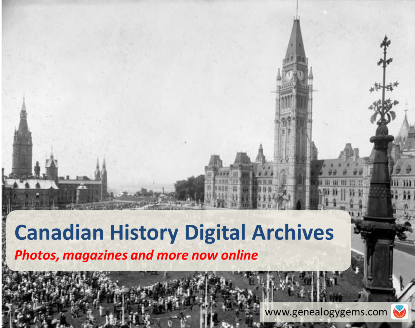
Canada: History Magazines in Digital Archive
Canada’s History Society has launched a new, mobile-responsive digital archive. Canada’s History launches with the entire run of a unique magazine: The Beaver, which explored the history of the Far North from fur-trade colonial days to modern times. “In addition to The Beaver, the archive will feature issues of Canada’s History magazine as well as Kayak: Canada’s History Magazine for Kids,” says a news article. The project was partnered by the Hudson’s Bay Company History Foundation. Its website is also worth exploring if your family history reaches into that part of the world.
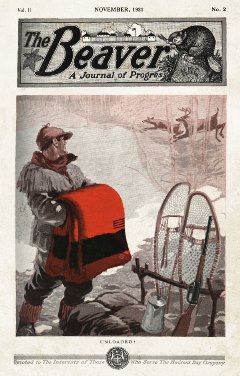
Image courtesy Canada’s History Society.
Canada: Photo Archive
More than 100,000 digitized photos represent the beginning of a new Canada photo archive available to subscribers of The Globe and Mail, which is celebrating its 173rd birthday this year along with the country’s 150th. According to a news article, photo topics “range from a 1901 picture of the Forester’s Arch being erected on Bay and Richmond streets for a royal visit to a Canadian astronomical discovery in the late 1990s. You can search the archive by date or Globe photographer, and there are special collections that cover different aspects of Canadian life.”
England: Norfolk Records
Subscription website Findmypast.com has added to these collections of genealogical records on Norfolk, England (see a Findmypast special offer at the bottom of this post):
- Norfolk Marriage Bonds, 1557-1915. “Browse 444 volumes of marriage bonds from four ecclesiastical courts: the Archdeaconry of Norfolk Court, the Archdeaconry of Norwich Court, the Dean & Chapter of Norwich, and the Diocese of Norwich Consistory Court.”
- Norfolk Non-Conformist Church Records, 1613-1901. Browse “11 registers covering various denominations including Methodist, Quaker, and Baptist in the parishes of Attleborough, Aylsham, Kenninghall, Norwich, Tasburgh, Walsingham, and Wymondham.”
- Norfolk Poor Law Union Records, 1796-1900. Browse “55 volumes covering 20 unions across Norfolk to discover whether your ancestors fell on hard times. Explore 10 different types of records, ranging from baptism and report books to relief lists and court orders.”
England and Wales: Criminal Records
Findmypast.com has finished adding a final installment to its Crimes, Prison and Punishment Collection. About 68,000 records were added that may help you “uncover ordinary and extraordinary stories of criminals, victims and law enforcers from Georgian highway robbers to Victorian murderers, Edwardian thieves, and a whole host of colorful characters in between!”
Scotland: Glasgow Newspapers
The British Newspaper Archive has added the following to its collection of Glasgow newspapers:
- Glasgow Evening Citizen: added the years 1879-1892, so the current collection now tops 20,000 pages and covers 1866-1890.
- Glasgow Evening Post: added the years 1881-1890. The total collection of over 14,000 pages and covers 1867-1890.
Scotland: Presbyterian Church Records
More than 36,000 Presbyterian church records, covering 1744 to 1855, have been added to ScotlandsPeople, a website maintained by the National Records of Scotland. “The 20,255 births and baptisms (1744–1855), 10,368 marriages and proclamations (1729–1855) and 5,422 death and burial records (1783–1855) may be especially helpful for anyone searching for a person who was born or baptized, married, or died before the introduction of statutory registration in 1855,” states an article on the site.
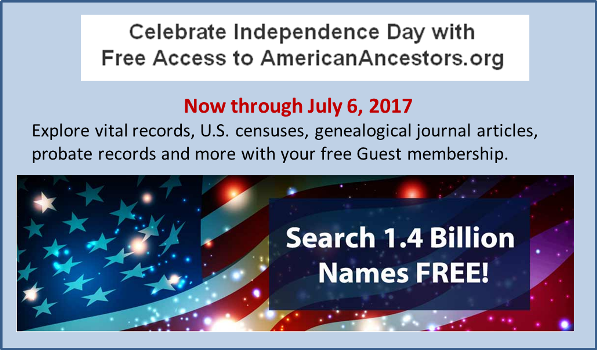 United States: Oregon Digital Archive
United States: Oregon Digital Archive
The Oregon Historical Society has just launched OHS Digital Collections, a new resource for researching Oregonians on your family tree. “This new website allows online public access to a rich variety of materials from the OHS Research Library, including items from the manuscript, photograph, film and oral history collections,” states a Hillsboro Tribune article. More content is planned for this new site, so check back periodically.
United States: Virginia Newspapers
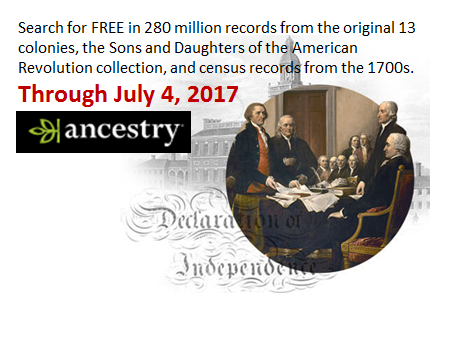 The Virginia Newspaper Project is putting the Library of Virginia’s collection of Civilian Conservation Corps (CCC) newspapers on Virginia Chronicle, a free digital newspaper archive with nearly a million pages. According to an announcement, “The camp newspapers in the LVA’s collection, published from 1934 to 1941 by the young men of the CCC, were mostly distributed in camps throughout the Commonwealth, though a handful are from locales outside Virginia….[The camp newspapers] offer a vivid picture of camp life during the Depression…[and] are also packed with the names of people who were active in the CCC–you might find a mention of one of your relatives among the pages. Click here to learn more about the CCC and the newspapers they produced.”
The Virginia Newspaper Project is putting the Library of Virginia’s collection of Civilian Conservation Corps (CCC) newspapers on Virginia Chronicle, a free digital newspaper archive with nearly a million pages. According to an announcement, “The camp newspapers in the LVA’s collection, published from 1934 to 1941 by the young men of the CCC, were mostly distributed in camps throughout the Commonwealth, though a handful are from locales outside Virginia….[The camp newspapers] offer a vivid picture of camp life during the Depression…[and] are also packed with the names of people who were active in the CCC–you might find a mention of one of your relatives among the pages. Click here to learn more about the CCC and the newspapers they produced.”
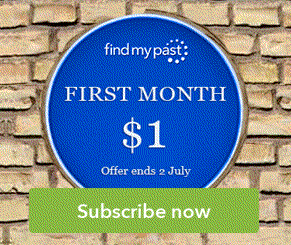 Special offer: Through July 2, 2017, get your first month of Findmypast.com World Subscription for just $1.00! In addition to unparalleled record content for England, Scotland, Ireland and Wales, Findmypast has added tons of great content to its US and Canada collections.
Special offer: Through July 2, 2017, get your first month of Findmypast.com World Subscription for just $1.00! In addition to unparalleled record content for England, Scotland, Ireland and Wales, Findmypast has added tons of great content to its US and Canada collections.
Bonus! Get an exclusive subscriber-only webinar, 20 Unmissable Resources for Tracing Your British and Irish Ancestors, when you sign up!
Full disclosure: This post contains affiliate links and Genealogy Gems will be compensated if you make a purchase after clicking on these links. Thank you for supporting Genealogy Gems!




























 Special offer: Through July 2, 2017, get your first month of Findmypast.com World Subscription for just $1.00! In addition to unparalleled record content for England, Scotland, Ireland and Wales, Findmypast has added tons of great content to its US and Canada collections.
Special offer: Through July 2, 2017, get your first month of Findmypast.com World Subscription for just $1.00! In addition to unparalleled record content for England, Scotland, Ireland and Wales, Findmypast has added tons of great content to its US and Canada collections.


